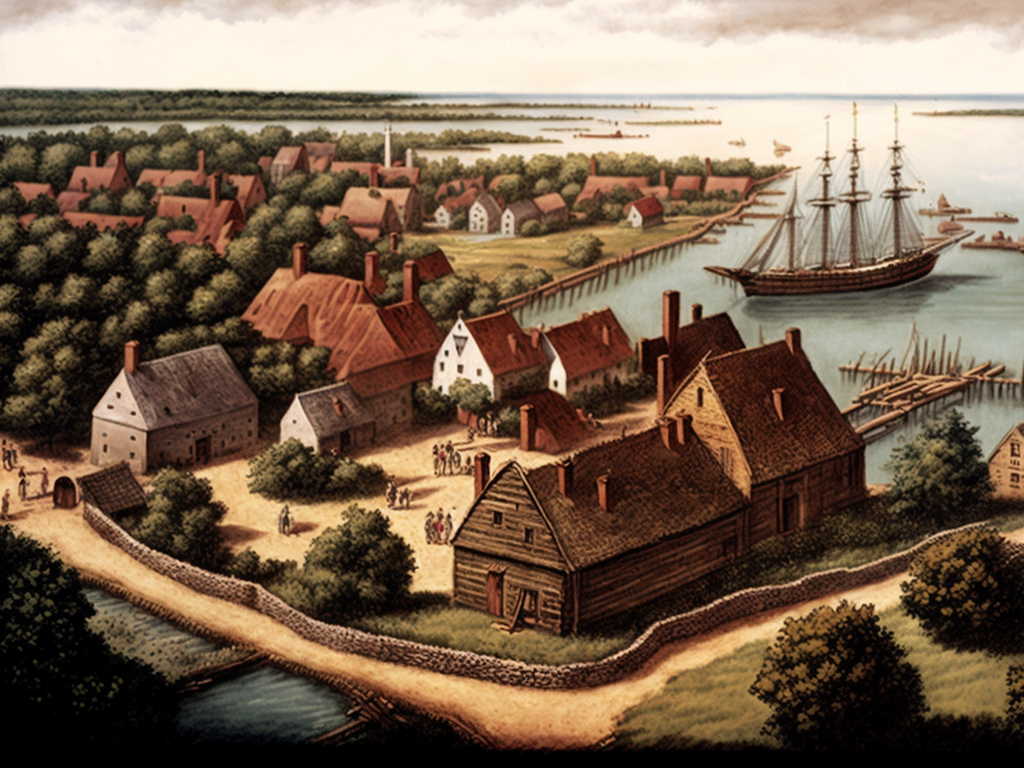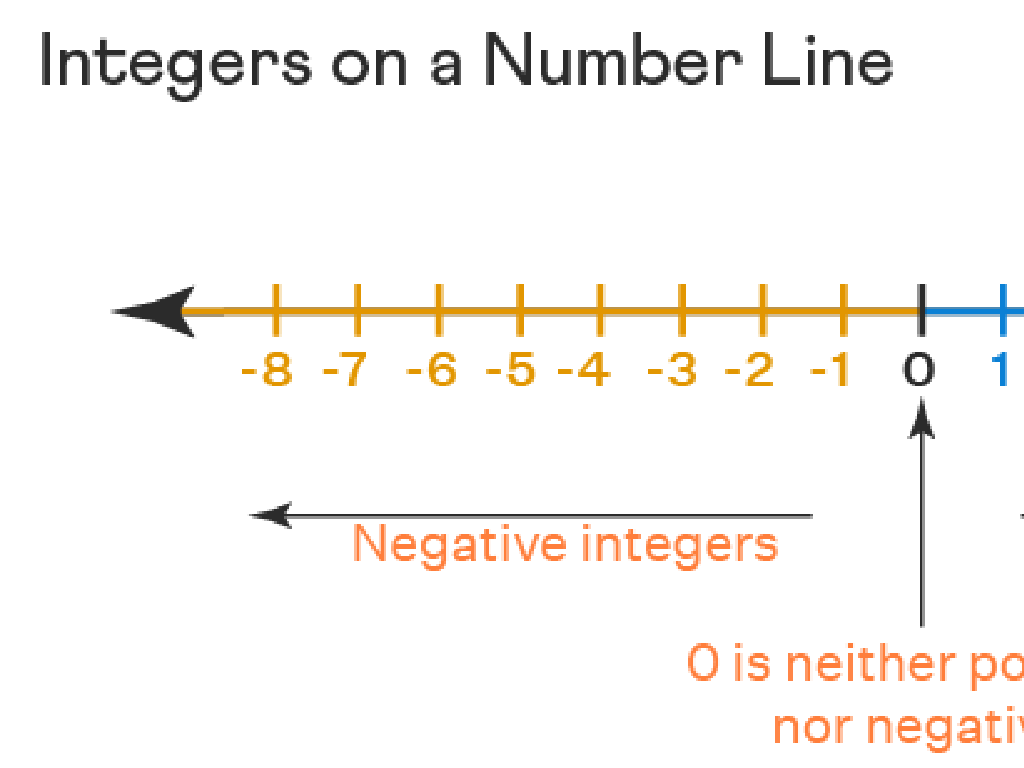The Marshall Court
Subject: Social studies
Grade: Eighth grade
Topic: The Early Republic
Please LOG IN to download the presentation. Access is available to registered users only.
View More Content
The Marshall Court: Shaping the Nation
– Explore The Early Republic era
– A period of rapid growth and change post-Revolution
– Introducing The Marshall Court
– The Supreme Court under Chief Justice John Marshall
– Grasp the court’s historical role
– How the court defined federal power and rights
– Comprehend the court’s lasting impact
– The decisions still influence U.S. law and society
|
This slide introduces students to the transformative era of The Early Republic and sets the stage for a focused discussion on The Marshall Court. Emphasize the significance of this period as a time of establishing a national identity and government following the American Revolution. The Marshall Court, led by Chief Justice John Marshall, played a pivotal role in interpreting the Constitution and establishing the principle of judicial review, which allowed the Court to strike down laws it found unconstitutional. Highlight the court’s influence on the development of the federal government’s power and its lasting impact on American legal and political systems. Encourage students to think critically about how historical decisions continue to affect their lives today.
John Marshall: Architect of the Supreme Court
– Biography of John Marshall
– Born in 1755, became Chief Justice in 1801
– His appointment as Chief Justice
– Appointed by President John Adams
– Marshall’s impact on the Court
– Established judicial review in Marbury v. Madison
– The enduring Marshall legacy
– Shaped the balance of power in U.S. government
|
John Marshall served as the fourth Chief Justice of the United States, shaping American constitutional law and making the Supreme Court a coequal branch of government alongside the presidency and Congress. His biography includes his early life, legal career, and his role in landmark cases. Appointed by President John Adams in 1801, Marshall’s most significant contribution was establishing the principle of judicial review with the Marbury v. Madison case, affirming the Court’s power to declare legislative and executive acts unconstitutional. His tenure lasted until 1835, leaving a legacy that continues to influence the judicial system and the interpretation of the Constitution. Encourage students to discuss how Marshall’s decisions still affect their lives today.
The Marshall Court: An Overview
– Role of the Supreme Court
– It’s the highest court in the U.S., interpreting laws
– Marshall Court’s significance
– Marshall Court decisions shaped future of American law
– Key principles established
– Principles like judicial review were affirmed
– Impact on U.S. legal system
– Decisions still influence legal interpretations today
|
This slide introduces the Marshall Court and its pivotal role in shaping the American legal system. Begin by explaining the function of the Supreme Court as the ultimate interpreter of the U.S. Constitution and laws. Emphasize the historical significance of the Marshall Court, led by Chief Justice John Marshall from 1801 to 1835, which laid the foundation for American jurisprudence. Key principles such as judicial review, established in Marbury v. Madison, and the strengthening of federal power over states are to be highlighted. Discuss the lasting impact of the Marshall Court’s decisions on today’s legal system and how they continue to affect interpretations of the Constitution. Encourage students to think about how these principles apply to current events and legal debates.
Landmark Cases: Marbury v. Madison
– Summary of Marbury v. Madison
– 1803 case where Marbury sued for his commission
– Judicial review establishment
– The case led to the concept of judicial review, allowing courts to nullify laws
– Impact on balance of powers
– It redefined the power balance among the three branches of government
|
Marbury v. Madison (1803) is a pivotal case in U.S. history that established the principle of judicial review, which allows the Supreme Court to declare laws unconstitutional. This case arose when William Marbury sued for his commission as a justice of the peace, which he had been denied. Chief Justice John Marshall’s ruling asserted the power of the judicial branch by declaring that the Judiciary Act of 1789, which would have forced the delivery of the commission, was unconstitutional. This decision significantly impacted the balance of power among the legislative, executive, and judicial branches by giving the judiciary a much stronger role in government. It’s crucial for students to understand how this case shaped the functioning of American democracy and the ongoing implications for the separation of powers.
Landmark Cases: McCulloch v. Maryland
– Summary of McCulloch v. Maryland
– 1819 case about state vs. federal power over a bank
– Federalism principle discussion
– Federalism balances power between national and state governments
– Case’s impact on federal power
– The ruling confirmed federal laws overrule state laws
– Significance in American law
|
This slide focuses on the landmark Supreme Court case McCulloch v. Maryland, which played a pivotal role in defining the balance of power between state and federal governments. The case arose when Maryland attempted to tax the Second Bank of the United States, leading to a dispute over whether a state had the power to do so. The Supreme Court’s decision, delivered by Chief Justice John Marshall, established that federal laws have supremacy over conflicting state laws and that states cannot interfere with federal institutions. This case reinforced the principle of federalism and is a cornerstone in the development of American constitutional law. It’s important for students to understand the lasting implications of this case on the power dynamics within the United States government.
The Legacy of the Marshall Court
– Influence on Constitutional interpretation
– Established principles of federalism and the power of judicial review.
– Strengthened the national government
– Centralized power, balancing state and federal interests.
– Promoted economic growth
– Decisions facilitated commerce, banking, and infrastructure.
– Lasting impact on U.S. law
|
The Marshall Court, under Chief Justice John Marshall, had a profound impact on the development of the American legal system. Its decisions laid the groundwork for the authority of the Supreme Court to interpret the Constitution, a process known as judicial review. This era saw the national government’s power over the states increase, creating a more unified legal framework. The court also played a crucial role in promoting economic growth by supporting the creation of a stable business environment, which encouraged investment and development. The precedents set during this time continue to influence U.S. law and the balance of power between state and federal governments.
Class Activity: Mock Court – Marbury v. Madison
– Divide into groups for reenactment
– Present arguments on judicial review
– Engage in group discussion
– Discuss the case’s details and perspectives
– Reflect on Supreme Court’s role
– Why do Supreme Court decisions matter?
|
This activity is designed to give students a hands-on understanding of the landmark case Marbury v. Madison and the concept of judicial review. By dividing the class into groups, students will take on roles and argue for or against the idea of the Supreme Court’s power to review and possibly nullify acts of Congress. After the reenactment, facilitate a discussion that allows students to express their thoughts on the case and its implications. Encourage them to reflect on how the Supreme Court’s decisions can affect the country. As a teacher, provide guidance on the historical context and ensure that each group understands the significance of their arguments. Possible variations of the activity could include assigning different historical figures to each group, having a mock trial, or creating visual aids to support their arguments.
Reflecting on The Marshall Court
– Recap Marshall Court decisions
– Impact on American legal system
– Established judicial review, strengthening the judiciary
– Reflect on the court’s legacy
– Consider how decisions affect us today
– Engage in Q&A session
|
This slide aims to summarize the key points discussed about the Marshall Court and its landmark decisions. Emphasize the long-lasting impact of the Court, particularly how it established the principle of judicial review in Marbury v. Madison, thereby affirming the judiciary’s role in interpreting the Constitution. Encourage students to think critically about how these early decisions continue to influence the American legal system and society. Conclude with a Q&A session, allowing students to clarify any doubts and engage in a deeper discussion about the topics covered. Prepare to address common questions and guide students to make connections between historical judicial decisions and current legal practices.






